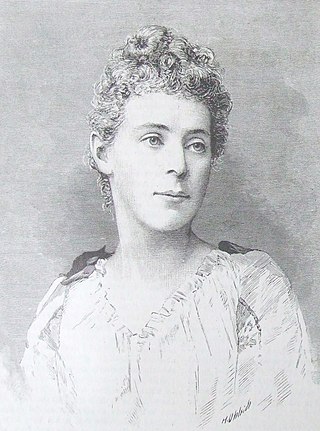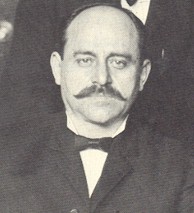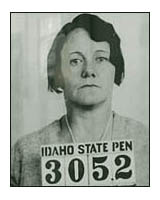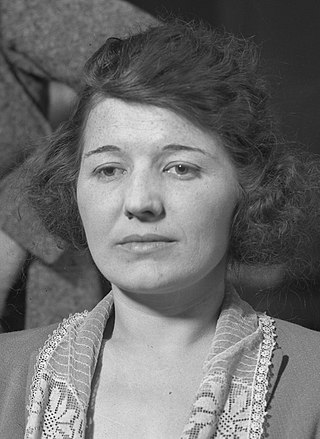Related Research Articles

Margie Velma Barfield was an American serial killer who was convicted of one murder but eventually confessed to six murders in total. Barfield was the first woman in the United States to be executed after the 1976 resumption of capital punishment and the first since 1962. She was also the first woman to be executed by lethal injection.

Anna Marie Hahn was a German-born American serial killer. She murdered 5 elderly men from Cincinnati by poison between 1933 and 1937. She was convicted of murder and executed by electric chair in 1938.

Ottilie "Tillie" Klimek was a Polish American serial killer, active in Chicago. According to accounts, she pretended to have precognitive dreams, accurately predicting the dates of death of her victims, when in reality she was merely scheduling their deaths.

Judias Anna Lou "Judy" Buenoano was an American female serial killer who was executed in Florida for the 1971 murder of her first husband James Goodyear. She was also convicted of the 1980 murder of her son, Michael Buenoano, and of the 1983 attempted murder of her boyfriend, John Gentry. Buenoano is also acknowledged to have been responsible for the 1978 death of another boyfriend, Bobby Joe Morris, in Colorado. But by the time authorities tied Buenoano to Morris, she had already been sentenced to death in the state of Florida.
Audrey Marie Hilley, also known by the aliases Robbi Hannon and Teri Martin, was an American murderer and suspected serial killer. She was suspected in the death by poisoning of her husband and the attempted murder of her daughter, and spent three years as a fugitive from justice. Her life and crime spree are the subjects of the 1991 telefilm Wife, Mother, Murderer.

Florence Elizabeth Chandler Maybrick was an American woman convicted in the United Kingdom of murdering her husband, cotton merchant James Maybrick.
Mariticide literally means the killing of one's own husband. It can refer to the act itself or the person who carries it out. It can also be used in the context of the killing of one's own boyfriend. In current common law terminology, it is used as a gender-neutral term for killing one's own spouse or significant other of either sex. Conversely, the killing of a wife or girlfriend is called uxoricide.

The Indiana Women's Prison was established in 1873 as the first adult female correctional facility in the country. The original location of the prison was one mile (1.6 km) east of downtown Indianapolis. It has since moved to 2596 Girls School Road, former location of the Indianapolis Juvenile Correctional Facility. As of 2005, it had an average daily population of 420 inmates, most of whom are members of special-needs populations, such as geriatric, mentally ill, pregnant, and juveniles sentenced as adults. By the end of 2015, the population increased to 599 inmates. Security levels range from medium to maximum. The prison holds Indiana's only death row for women; however, it currently has no death row inmates. The one woman under an Indiana death sentence, Debra Denise Brown, had her sentence commuted to 140 years imprisonment in 2018 and is being held in Ohio.
Blanche Taylor Moore is an American convicted murderer and a possible serial killer from Alamance County, North Carolina. She is awaiting execution in North Carolina for the fatal poisoning of her boyfriend in 1986. She is also suspected of the death of her father, mother-in-law, and first husband, and the attempted murder of her second husband in 1989.
Sharon Lynn Wichman, also known by her married name Sharon Jones, is an American former competition swimmer and 1968 Olympic champion in the breaststroke.

Johann Otto Hoch is the most famous and last-used alias of a German-born murderer and bigamist, John Schmidt. He was found guilty of the murder of one wife but is thought to have killed more, perhaps up to 50 victims. He was hanged.

Lyda Southard, also known as Lyda Anna Mae Trueblood, was an American female suspected serial killer. It was suspected that she had killed four of her husbands, a brother-in-law, and her daughter by using arsenic poisoning derived from flypaper in order to obtain life insurance money.
Mary Northern Kinder was a Prohibition era gun moll, most noted for being the girlfriend of Harry Pierpont and associate of John Dillinger. Along with Pearl Elliott, she was one of two women listed by the Chicago Police Department's Public Enemies list in 1933.
Lena Pierpont was the mother of Prohibition gangster Harry Pierpont. Her fierce loyalty to her son and his compatriots led to her arrest on numerous occasions by police in an attempt to ascertain her son's whereabouts.
Martha Wise was an American poisoner and serial killer. After her husband died and her family forced her to end a relationship with a new lover, Wise retaliated by poisoning seventeen family members, of whom three died, in 1924. She was convicted of one of the murders, despite defense claims that she was mentally ill and that her lover had ordered her to poison her family. The case is considered one of the most sensational of the era in Ohio, where it occurred.

"30 Days Without an Accident" is the fourth season premiere of the post-apocalyptic horror television series The Walking Dead, which aired on AMC on October 13, 2013. The episode was written by Scott M. Gimple, the series' new showrunner, and directed by Greg Nicotero.
The lynching of the Frenches of Warsaw took place in Warsaw, Gallatin County, Kentucky on May 3, 1876, between 1 am and 2 am on a Wednesday morning. Benjamin and Mollie French, African Americans, were lynched by a white mob for the murder of another African American, which was unusual for this period. Lake Jones was an elderly black man who had faithfully served a white family named Howard, both before and after his emancipation from slavery. The Frenches were accused of poisoning Lake Jones with arsenic and intending to steal his money.

Ana di Pištonja, better known as Baba Anujka, was a Serbo-Romanian convicted serial killer amateur chemist from the village of Vladimirovac, which was during her life part of the Austrian Empire, Austria-Hungary and eventually Yugoslavia. She poisoned at least 50 people and possibly as many as 150 in the late 19th and early 20th centuries. She was apprehended in 1928 at age 90 and sentenced to 15 years in prison in 1929 as an accomplice in two murders. She was released due to old age after spending eight years in prison.
The trial of Kate Dover of February 1882, before Mr Justice Cave, was a major event at the criminal court in Leeds Town Hall, Leeds, West Yorkshire, England. It was attended by many people, and attracted much newspaper publicity. It followed the death of Kate Dover's 61-year-old employer and lover, Thomas Skinner from arsenic poisoning. Known as the Queen of Heeley for her fashionable taste in clothes, Dover was 27 years old at the time, and was Skinner's housekeeper. She was convicted of manslaughter, and sentenced to penal servitude for life, which she served at Woking Female Prison. By 1901, she was out of jail. She lived her remaining years with her sisters in Rotherham.

Clara Phillips, nicknamed the Tiger Woman, was an American showgirl and chorus girl who, in 1922, murdered 19-year-old bank teller Alberta Meadows based on rumors that her husband, Armour L. Phillips, had been having an affair with her. Phillips' crime was described as "brutal" and "remorseless" by many local and national news organizations, which extensively covered her trial, subsequent escape from prison, and recapture.
References
- 1 2 3 4 5 6 7 8 9 "Woman "Lifer" Displays Skill in Prison Escape". The Crawfordsville Review. October 13, 1925.
- ↑ "Retro Indy: Clara Gibson Carl and the arsenic murders". Indianapolis Star . Retrieved 2018-08-31.
- ↑ Ohio, U.S., Births and Christenings Index, 1774-1973
- ↑ Ohio, U.S., County Marriage Records, 1774–1993
- ↑ 1900 United States Federal Census
- ↑ Kentucky, U.S., County Marriage Records, 1783–1965
- 1 2 3 4 5 6 7 8 9 10 11 "Shelby County Indiana Newspaper Articles - Carl". Shelby County, Indiana Family History and Genealogy. Retrieved November 8, 2013.
- ↑ "Robert Gibson Dead". Moberly Evening Democrat. Moberly, Missouri. March 19, 1920. p. 1. Retrieved 7 February 2024.
- ↑ Indiana, U.S., Death Certificates, 1899–2017
- ↑ "Poison was Bought by Clara Carl". Warsaw Daily. May 23, 1922.
- ↑ Summit County, Ohio, U.S., Marriage Records, 1840–1980
- ↑ Ohio, U.S., Death Records, 1908–1932, 1938–2018